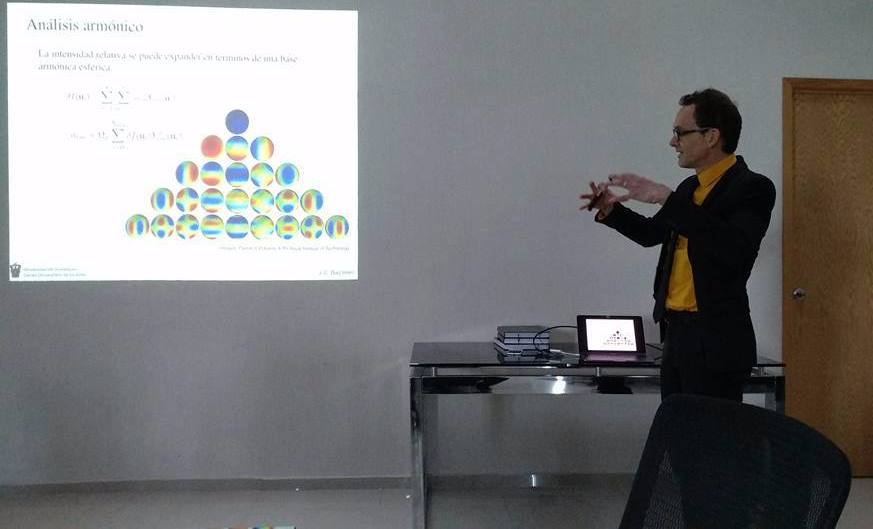
At WIPAC, Juan Carlos Díaz-Vélez leads the simulation production for IceCube, but he has also been busy as a PhD candidate of the Universidad de Guadalajara in Mexico. Yesterday, the Centro Universitario de los Valles (CUVALLES) in Guadalajara awarded him the best post-graduate thesis in 2017, acknowledging his contributions to the study of cosmic rays with HAWC and IceCube.
The Rector of CUVALLES, José Luis Santana Medina, was joined by the Rector General of the Universidad de Guadalajara, Itzcoatl Tonatiuh Bravo Padilla, in leading the award ceremony last Wednesday in Guadalajara. The prize given to Juan Carlos is the first of a yearly award series that aims to recognize research done in the state of Jalisco. HAWC is a flagship project for this region that has boosted what was just a nascent astrophysics group a few years ago into a mature research team with outstanding contributions to the most powerful ground-based gamma-ray telescope to date.
“It’s been a long journey, and I want to thank my thesis supervisors, Paolo Desiati from WIPAC and Eduardo de la Fuente Acosta from Guadalajara,” says Juan Carlos Díaz-Vélez. “They provided research and academic guidance in this study and have been very supportive.”
Juan Carlos was originally a dancer, then a physicist, and later a programmer, eventually becoming all these things at the same time. He joined IceCube in 2004 and started working on his PhD a few years later He graduated just a month ago and now plans to continue doing research while maintaining his duties as a programmer. Ballet might be too hard on his body these days, but he continues starring in flamenco and Mexican folklore shows as a dancer.
Juan Carlos’s research project included the first joint map of the cosmic ray anisotropy with IceCube and HAWC, which allows for an almost full coverage of the sky. The anisotropy map showed a clear continuity between small- and large-scale features of the anisotropy in both data samples, and the angular power spectrum provides a new tool for studying propagation of cosmic rays in the interstellar medium. Juan Carlos hopes to continue his study of cosmic rays and collaborate with other scientists while still supporting the technical aspects of IceCube operations.
